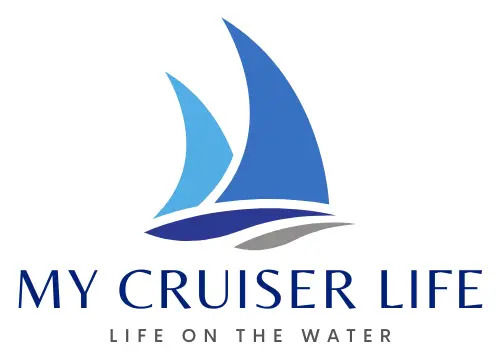Living afloat can look radically different depending on what the boats and waterways look like where you live. Living on a narrowboat is popular in the UK, where historic narrow canals connect many towns. Narrowboats are unique canal boats that are, at least in some ways, perfect for living aboard and traveling on.
Let’s take a closer look at these canal boats and what makes them special.
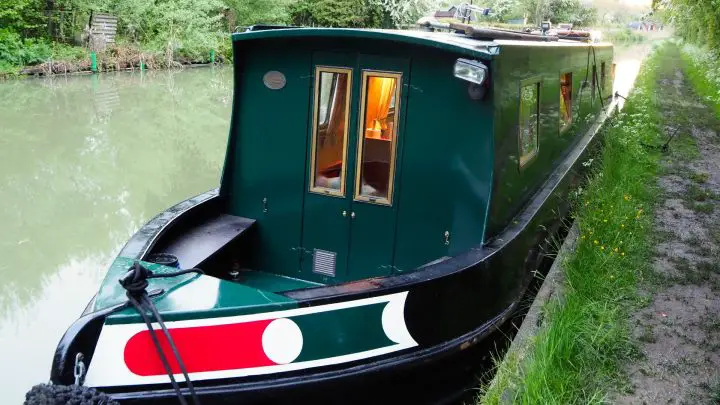
Table of Contents
- What Is a Narrowboat and What Makes a Narrowboat Special?
- History of the UK Narrowboats and Inland Waterways
- Cost of Living on a Narrowboat
- What’s It Like Living on a Narrowboat?
- A Typical Day Living on a Narrowboat
- UK Canal Boat FAQs
What Is a Narrowboat and What Makes a Narrowboat Special?
A narrowboat is a specific kind of canal boat common in the United Kingdom. Made to fit the tiny canals and locks that crisscross the UK countryside, these boats are normally less than seven feet wide. They’re very long—usually between 40 and 60 feet to give them enough space to live in.
But to understand the appeal of narrowboats, you have to know a little about the lifestyle and the scenery. There are over 4,700 miles of navigable canals, rivers, and estuaries in the UK, many of which are linked into a vast network.
When the system was created, the canals were built to move goods from town to town. But these days, companies use trucks or trains to do that work, leaving the canals unused. In their stead, recreational narrowboating has taken off.
It’s common for individuals to own narrowboats and cruise throughout the system for fun. You can travel through most of the major cities in England, Wales, and Ireland by narrowboat, coast-to-coast. Moorings are widely available along the canal, so there are many places you can tie up, visit the town, and enjoy walks through quiet countryside villages and bustling cities.
Traveling via narrowboat is an experience like no other. The speed limit in the canals is a neck-breaking 4 miles per hour. As you might imagine, that gives you plenty of time to stop and smell the roses, enjoy the sights and sounds along the way, and make new friends among the other narrowboat owners.
Since you’re never far from land, getting around is fairly easy by narrowboat. Most narrow canals have a towpath adjacent, where the horses once towed the barges through the canal. Now, these paths are used for walking and cycling. That makes it pretty easy to get on and off the boat anywhere, and there’s usually a path into town for supplies.
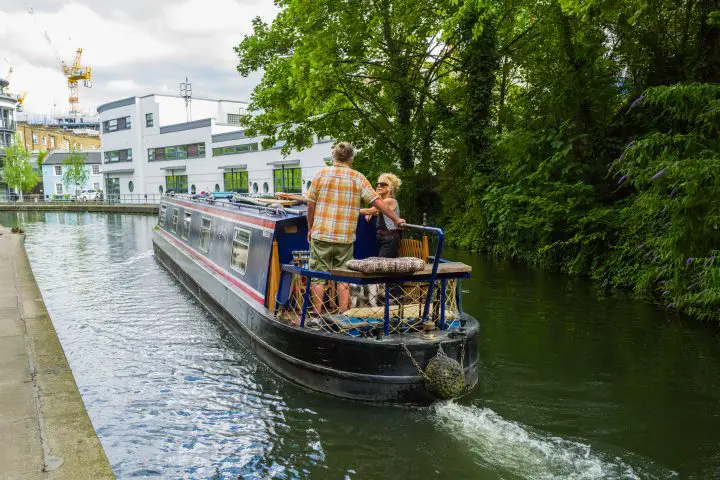
Is it Possible to Live on a Narrowboat?
Living full- or part-time on a narrowboat is possible, and many boaters do it. Of course, like any sort of living on a boat, it’s easier said than done. About 8,500 narrowboats are registered as permanent homes on the British waterway system. Some of these live in one place at a residential mooring, while others travel full-time and are called continuous cruisers.
Both of these ways to live on a narrowboat have some issues that you’ll have to work out before calling the broker. Finding a residential mooring that allows full-time living aboard can be tough. Around major urban areas, it can also be very expensive. There’s high demand for these moorings where the canals are busy, and other living alternatives are very expensive.
Continuous cruising also has its problems. It’s not a good choice if you are settled, needing a base of operations and a fixed address. If you work or have kids in school at a certain place, you can’t be cruising by definition. Continuous cruising means moving the boat and traveling all the time. It’s fun for a while but can also become exhausting if you don’t take enough breaks.
Narrowboats and anyone wishing to use the canal system must be licensed by the Canal and River Trust (CRT). This requires proof of insurance and designating your home mooring location and fixed address. And, of course, paying the licensing fee is required. If you choose to be a continuous cruiser, the CRT enforces rules that say you must keep moving and cannot stay too long in one place.
Here’s a video tour of a typical, live-aboard narrowboat.
History of the UK Narrowboats and Inland Waterways
The canal network of the UK traces its roots back to Roman times when some were dug for irrigation. A few from back there were large enough for navigation and connected major river systems, like the Foss Dyke that connects Torksey and Lincoln on the River Trent. It is the oldest canal in England that’s still in use today and was built around AD 120.
While the canals expanded over the years, it wasn’t until the Industrial Revolution that the need for them to expand was critical. Near the end of the 18th century, roads were still unsuitable for large amounts of traffic. Canals and barges were faster and more practical, and advances meant that the canals could be built with locks that went up and down hills instead of around them.
In those days, most barges were unpowered and towed along via horses. To this day, many UK canals have towpaths adjacent to the canals.
In the 19th century, railroads replaced canals as the primary way to move goods. Some major canals were big enough for all motorized shipping, but the narrow canals with towpaths quickly became obsolete. Low costs and tolls kept the canals in use until the 1960s when a hard winter and frozen waterways all but stopped canal traffic for over three months.
Luckily, there was a renewed interest in the canals’ history around this time. In 1944, L.T.C. Rolt wrote a book called Narrow Boat that described his journey through the canal system. In the 1950s, several holiday boat rental companies began offering rentals.
Eventually, narrowboats became a thing. A canal holiday became a familiar concept, and you could travel nearly anywhere in England, Scotland, Wales, or Ireland. The canals are now a source of community pride, drawing boaters to small towns and people who just like being around boats. In England, a gongoozler is a person who just enjoys watching the goings on on the canals.
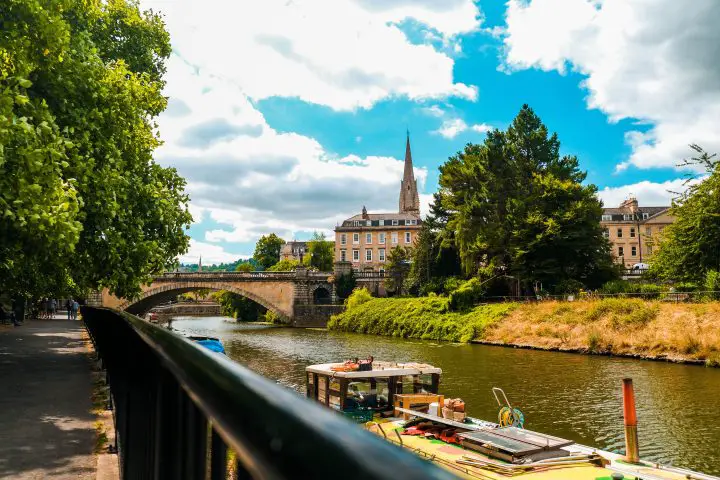
Cost of Living on a Narrowboat
One of the big draws of narrowboat life is that it is often said to be a cheap alternative to living land life. As with everything, the truth is—it depends! So many factors affect the cost of living on a boat, from the boat itself to where you want to live and what your lifestyle looks like.
It depends on the boat you choose. You can pick up some old “project” boats for cheap, but getting them up to snuff will take a lot of money and sweat equity. You can spend more and get a nicer boat, so you’ll spend more time boating and having fun, but you have to spend more to get it. To some extent, all boats are projects. There will always be work and projects to do, no matter the age and condition of your narrowboat.
Then there is the problem of location. If you want a residential mooring in a big city, you will have to pay a premium, and it might be hard to come by. If you’re flexible and can live anywhere, you’ll have better luck finding reasonably priced moorings.
That being said, even an “expensive” residential mooring in a place like London or Bath is cheap compared to living the land life in these places.
So, is living on a narrowboat cheap? It depends on your budget, your attitude, and what standard of living you’re after. It also matters what you’re comparing it to; what exactly is your definition of cheap?
Here are a few cost items for living on a narrowboat that you might not have considered. It’s easy to romanticize the lifestyle, but life still goes on! Expenses can pile up no matter how and where you live.
- Licensing
- Insurance
- Mooring fees and marina fees
- Maintenance: engine servicing, blacking the hull, anodes, etc.
- Diesel for the engine and heating
- Gas, coal, or wood for heating, hot water, and cooking
- Toilet pump outs
- Internet and mobile service
- TV license
- Unexpected upgrades and maintenance
- Plus, all your regular expenses include groceries, dining out, personal items, incidentals, etc.
YouTubers Narrowboat Silver Fox did a great rundown of their living expenses and the costs involved. It’s worth checking out.
What’s It Like Living on a Narrowboat?
Living on a boat full-time—on any kind of boat—is a lifestyle choice. Some people will love it; some will hate it. While you can read all the articles and watch all the videos, there will always be surprises in this way of life, both pleasant and unpleasant.
What it’s like and how much you like it will depend greatly on your attitude. Are you always up for an adventure and happy to have a great story to share after something awful has happened? Or are you brought down easily by setbacks and looking for a more relaxing and easier way to live? When you put it that way, it’s pretty easy to see who might enjoy living on a narrowboat.
Compared to other boating adventures you might be interested in, narrowboats are pretty ideal for living onboard. They have open spaces, so you can furnish them as you see fit. Of course, they’re still cramped and lack adequate storage, but you have much more flexibility in the layout than other boats. Living on a sailboat, for example, offers less space, smaller windows, and you’re limited to the furniture the yacht designer provided.
They also solve the land access problem. There’s no anchoring or dinghing required with an inland canal boat. You simply tie up along the canal, in a marina, or at your home mooring, and then step off the boat. Everywhere you go is like living on a boat in a marina. And the moorings are usually within walking distance of villages and towns, so access to shops and supplies is usually close at hand. Water is easy to get, as are all the other necessities of boat life.

Advantages of a Narrowboat
- Narrowboats can be purchased cheaper than houses or flats
- Live on the water, closer to nature
- Part of the canal community, from adventurous cruisers to weekenders to folks living on a narrowboat in retirement
- Stay at a home mooring or travel as a continuous cruiser
- Move towns and take your home with you
- An alternative if you were planning Mediterranean cruising but can’t after Brexit
- Compared to other boating adventures, narrowboating offers less motion, no wakes or waves, and easier living options
Narrowboating Disadvantages
- Very small living space with not much storage
- Can be difficult or expensive to find boat parking or liveaboard moorings
- Everything on a boat requires more effort—i.e., moving around, getting on and off, daily chores, maintenance, etc.
- Greater exposure to the elements—colder and damper in winter, hotter in summer
- Constant maintenance requiring DIY and technical skills—easy stuff, but not in everyone’s wheelhouse
- Plumbing problems
- Electrical limitations
- Close quarters living with other boaters
- Lack of a permanent address can be difficult when dealing with banks, insurance companies, health care providers, etc.
Maintenance Drama
Maintenance always comes up when boaters talk about the downsides of the lifestyle. There’s engine maintenance, of course, but there’s also maintaining all the other boat systems. A lot of time is spent being your own mechanic, your own electrician, your own cabinet maker, and a whole slew of everything else. Most people pick up these maintenance skills as they go.
Most people assume that boaters do these things themselves out of cheapness. While boat services are expensive, the problem that pushes us to do these chores is that we often lack no other option. Finding tradespeople to take care of your issues is sometimes impossible. There aren’t many to choose from, and the good ones are booked up for months in advance, while the bad ones leave you with bigger troubles than you started.
So, with no better option, we learn how to change the oil, fix a broken belt, replace the toilet’s joker valve (ugh!), and find a bad wiring ground. None of these tasks are simple or easy, and most require a part or tool you can’t get until next week. Once you’ve had some practice, you’ll figure out which part is that part before you start. But you’ll often tear something apart, only to discover the part and order it too late on a Friday afternoon. So now it’s two weeks away.
This is boat maintenance in a nutshell. It’s not much different than house maintenance, except it is smaller, more expensive, more aggravating, and you can’t just drive to the local hardware store for parts.
Toilet Drama
It doesn’t matter what sort of boat you’re on; the toilet is always a source of drama. Marine toilets are simply not very good. Whatever system you pick will have its quirks and limitations.
For many narrowboaters, the choice is between a standard marine system with a holding tank (also called pump out toilets) and a composting or separating toilet. Both have their plusses and minuses, and no solution’s right for everyone.
With either solution, the problem is what you do with the product. And with either solution, you’ll wind up thinking about and dealing with your waste far more than you ever would in a regular house with regular plumbing.
Pump out toilets work by storing the “flush” in a holding tank. Since most people don’t live on their boats, most boats come with small tanks that fill up quickly. These systems rely on small rubber hoses and often have problems with foul odors and clogging up.
The holding tank must be pumped out into a municipal waste treatment system or septic tank. Most marinas have a pump-out facility, but it can sometimes feel like they are few and far between. Sometimes, you might find them inoperable. It’s not unusual to need a pump-out every week or so. Having a portable cassette toilet on board is a good idea, just in case your main tank gets full.
Marine composting toilets can solve a few of these problems, but they open you up to new ones. First, you must realize that these toilets are not true composters—they work only by separating the liquids from the solids and drying out the solids. They don’t smell, have no plumbing, and usually don’t require you to go to a pump-out facility.
But getting rid of the products is a problem. The liquid tank is usually small—only one or two gallons. You’ll have to empty it every day or two. Most people carry it to a land toilet, flush it, or pour it directly into a septic tank. You could rig it to drain into a bigger holding tank, but then you’d need to worry about getting pumpouts.
The solids are a bigger problem. It can be turned into compost if you can access a large pile or facility, but most boaters don’t. It’s normal for it to be bagged and put in a garbage dumpster, but the CRT has banned this practice along the waterway as contamination from this has become a concern. In some areas, companies will pick up your compost. Luckily, you’ll only have to empty the solids bin every month or so.
Power Drama
Managing power on board is a constant thing. When you live in a house, the main power panel stays on all the time and has plenty of electricity to run everything. On a boat, you’re always limited in one way or another. If you’re plugged in at a mooring, you’re limited by the size of your shore power connection. If you aren’t plugged in, you must get all your power from your batteries—unless you run a generator.
So, your daily life onboard a narrowboat might be limited here and there. You can’t easily run air conditioning or electric heaters, for example. They simply use too much power to run all the time. Air conditioning isn’t a big problem, except on the hottest summer days. Heating can be accomplished with diesel, multi-fuel, or wood-burning heaters.
But there are tons of things we use in daily life that we don’t think too much about. Most small electrical items, like charging your phone and laptop, aren’t a big problem. However, heaters, hair dryers, electric kettles, toaster ovens, and other appliances might not always be an option.
You’ll also spend time worrying about your batteries and ensuring that you keep them charged up. Solar panels help, but you’ll still wind up having to run the engine or generator occasionally. In other words—even basic electricity requires more daily tasks than you’d expect.
Neighbor Drama
Boating often requires you to live in much closer quarters than you might otherwise, especially when tied to a mooring. That means you’ll be right on the canal’s edge, and other narrowboats will be immediately in front and behind you. At some marinas, you might be rafted side to side, making for even less personal space and less privacy.
In nearly all instances, this is neighborly and friendly. But drama will ensue in any situation where people are put in close quarters. Imagine it like RVing (caravaning) or even living in a flats complex (terraced housing) where you see a lot of your neighbors.
There’s also the security issue with being moored along the towpath and so close to the public eye. Some narrowboaters have had problems with break-ins and strangers boarding their boats for selfies. It’s certainly not the norm, but it’s a thing you should be aware of. And, of course, a lot depends on the area you’re traveling in.
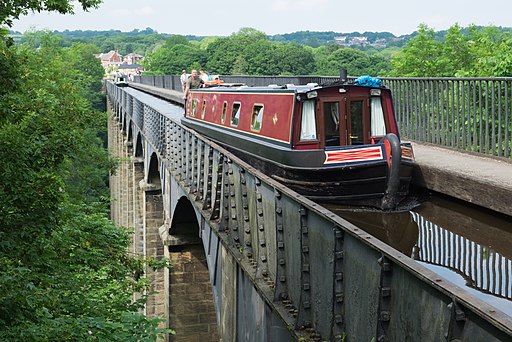
A Typical Day Living on a Narrowboat
Life on a narrowboat is an alternative lifestyle that isn’t right for everyone. It’s so dramatically different than land life in many ways, yet somehow familiar.
Boat life is easy to romanticize. For some, the most unpleasant surprise of living on a boat is how much like regular life it is. As one sailor I know says, “The problem with trying to change your life by moving onto a boat is that you bring yourself with you.”
One good way to get a glimpse of the lifestyle is to watch the videos made by those people doing it. For a realistic look at a day in the narrowboat life, join Colin, Shaun, and Otis of narrowboat Silver Fox.
UK Canal Boat FAQs
Can you live permanently on a canal boat?
Yes, you can live full-time on a narrowboat or a canal boat. A lot depends on precisely where you want to live and if you can find a mooring that allows it. In some areas, there might be a waitlist for liveaboard moorings, or they might be prohibitively expensive. Finding a place can be much easier if you are flexible and okay with living in less popular areas.
Can you legally live on a boat in the UK?
Yes, there is nothing illegal about living on a boat in the UK. As with boating in many other countries, the trick is finding a dock or mooring that will allow it. Some places prohibit or restrict living aboard, while some places welcome it. It’s all about the rules that a marina has in place. If you’re considering living on a boat, the best advice is to find a place to keep it first and then buy the boat second.
